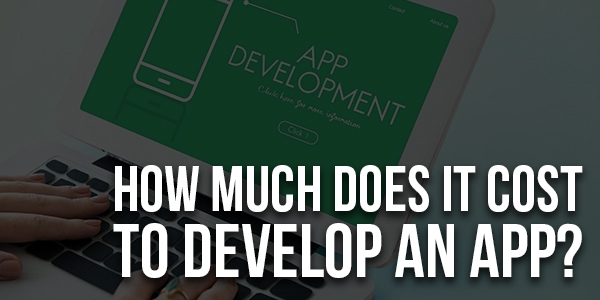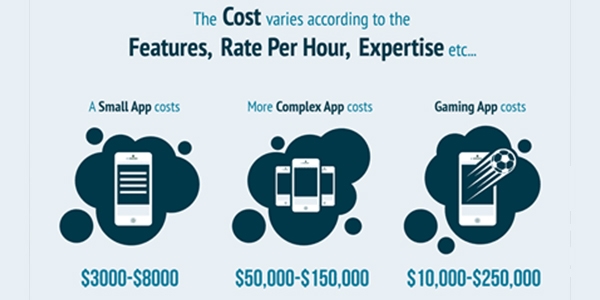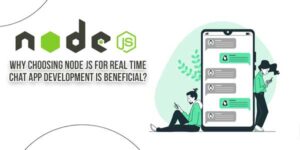
Would you be interested in knowing how long it takes to develop and launch an app from start to finish? How much of that time is for development, design, and App Store Optimization? By documenting all the steps involved in app development, we can understand the estimated time to develop an app. Read on.
Table of Contents
What Sort Of App Are You Developing?
What sort of app are you developing? For example, is it a mobile game app or maybe a web application? The type of app you’re developing will determine how much work it takes to get it into your hands. Suppose you want to create an amazing mobile game. You’ll need to create artwork and code for all the different devices that run that operating system (e.g., iOS or Android). Depending on your game’s complexity, this could take anywhere from two weeks to two months.
Have you ever worked with developers? If you’ve never worked with developers before, then your project will probably take longer than normal because there’s much more learning involved. It might take two weeks just learning how to communicate with your developer! On the other hand, if you’ve worked with developers before and know what they need from you, things should go smoother and faster.
If it’s an existing app and you just want to update it, then the time required will depend on what changes you want to make. It shouldn’t take too long if it’s just bug fixes and minor updates. However, if you want to completely overhaul the design or add new features, then this can be a much bigger undertaking.
If it’s a greenfield product that needs building from scratch, then obviously, this will take longer than updating an existing one – but how long depends on how complex your product will be. The time required for testing should also be considered. Let’s check how much time you will need at every step of your app development;
Step 1: Project Scoping, Planning, And Documentation
The first step in developing any platform is to outline all of the requirements that need to be met by the end product. This involves beginning with a project scope document that outlines all of the specific tasks and deliverables that need to be completed during development. This is where you’ll work with your team to determine the scope of your project, define the goals and objectives for its completion, and create a timeline for completing it all. You will also need to build a functional specification document that outlines exactly what you intend to build and how you intend to build it. This will help ensure that everyone involved in the project understands the task at hand. This can include:
- Functional requirements: What should be included in the app? For example, saving data in a database or displaying notifications on the screen when new content is available.
- Nonfunctional requirements: How should certain features behave? For example, ensuring that notifications display within five seconds after an update has been posted or checking whether users can access certain functionality after logging into their account.
Step 2: Designing
The design is the most important step in the app development process. It can take anywhere from two weeks to two months, depending on how much work you want to put into it.
Decide what your app will be about first and foremost. Once you have that figured out, you’ll need to design the user interface (UI). Your app’s user interface should be intuitive and simple for users to use, so they aren’t confused or frustrated.
You can use various tools like Photoshop or Sketch to create mockups of your app’s UI. These mockups should include screenshots of what the user would see at different times during the app’s lifecycle — for example, after logging in and clicking on a button.
Next, you’ll need to create wireframes that show how different pages will look when opened in sequence (instead of just one page at a time). Wireframes are usually made with pen and paper or using software. They show which page parts are clickable and how users will navigate through them.
Step 3: App Architecture Design And Development
You can start with a simple app, but it’s best to plan for future growth. The architecture of an app defines the way it will be built. The architecture design is the most important thing to consider before developing your app. The architecture design is the backbone of your app, and it determines how easy it will be for you to add new features or change existing ones. You can build an app using one of these architectures:
Native apps run on the device itself (iOS or Android). They are written in Objective C/Swift or Java/Kotlin for Android. Native apps are fast and have access to their device’s hardware features. But they also have their limitations. For example, they cannot be accessed from multiple platforms simultaneously as they are platform specific.
Hybrid apps run on both server and device simultaneously, combining some of the advantages of native apps with those of web applications. They are written primarily in HTML5/CSS3/JavaScript/AngularJS or other frameworks (like PhoneGap), then wrapped by a native wrapper written in Objective C/Swift or Java/Kotlin for Android. Hybrid apps have access to most hardware features but may not be as fast as native apps because they depend on a network connection to work properly (unless you use offline storage).
The main elements of an application architecture are:
- Models
- Views
- Controllers
- Routing
- Database access

Step 4: App Development
The time it takes to develop an app will vary depending on the type of app you want to create.
If you’re looking to create a simple mobile application, it can be developed in as little as a few weeks. For example, if you have a well-defined idea for an iPhone app, you’ll probably need to spend about four weeks from initial concept through launch.
For a complex development project like an enterprise system or custom-built application for your business that integrates with complex backend systems and databases, then the development process could take months or even years, largely determined by the scope of your project and how long it takes for all parties involved to come together with a shared vision of what needs to be built.
Step 5: QA And Testing
The app is ready, but before releasing it to the public, the app development company will need to test it. Testing an app can be a complicated process and requires many skill sets. You will need people who are familiar with the technical aspects of your app, as well as those who have experience in user experience and design.
This is a very important step in the app development process because you don’t want your users to have a bad experience with your app and leave a bad review or uninstall it.
The QA depends on many factors such as the app’s complexity, the number of features, etc. The average time to test iOS and Android apps can range from a few days to several weeks.
App developers have a typical app development cycle consisting of five stages:
- Understanding the business problem and defining the app requirements.
- Designing your solution and creating a prototype, which you can show to potential users for feedback.
- Coding the user interface (UI) and business logic.
- Testing your app on real devices and fixing bugs, if any.
- Optimize your app for speed and performance and add more features based on user feedback.
Step 6: Launch And Support
When the testing phase is over, launch the app into the store (or applications directory) where users can download it onto their devices; then provide support for any problems they encounter using your software.
With user acquisition, you have various options: paid advertising, affiliate partnerships, influencer outreach, and more.
Once your app is live after all the hard work, you’ll need to provide ongoing support. This includes in-app messaging, emails, and proactive measures like monitoring app store reviews and answering questions on social media channels.
Conclusion:
It takes 1 – 4 months to develop a small application, but it all depends on what is required (Features, Platforms).
The average expected time for app development can vary drastically depending on the project’s complexity. For example, a simple app that fits an existing website’s feature set may take no more than 4 weeks to create. On the other hand, if the feature set is more complex or if it is intended for multiple platforms (iOS and Android), app developers in Australia can expect that the app development company will take from months to years.

 About the Author:
About the Author:
















Thank you for so many details it really helpful.
Welcome here and thanks for reading our article and sharing your view. This will be very helpful to us to let us motivate to provide you with more awesome and valuable content from a different mind. Thanks again.